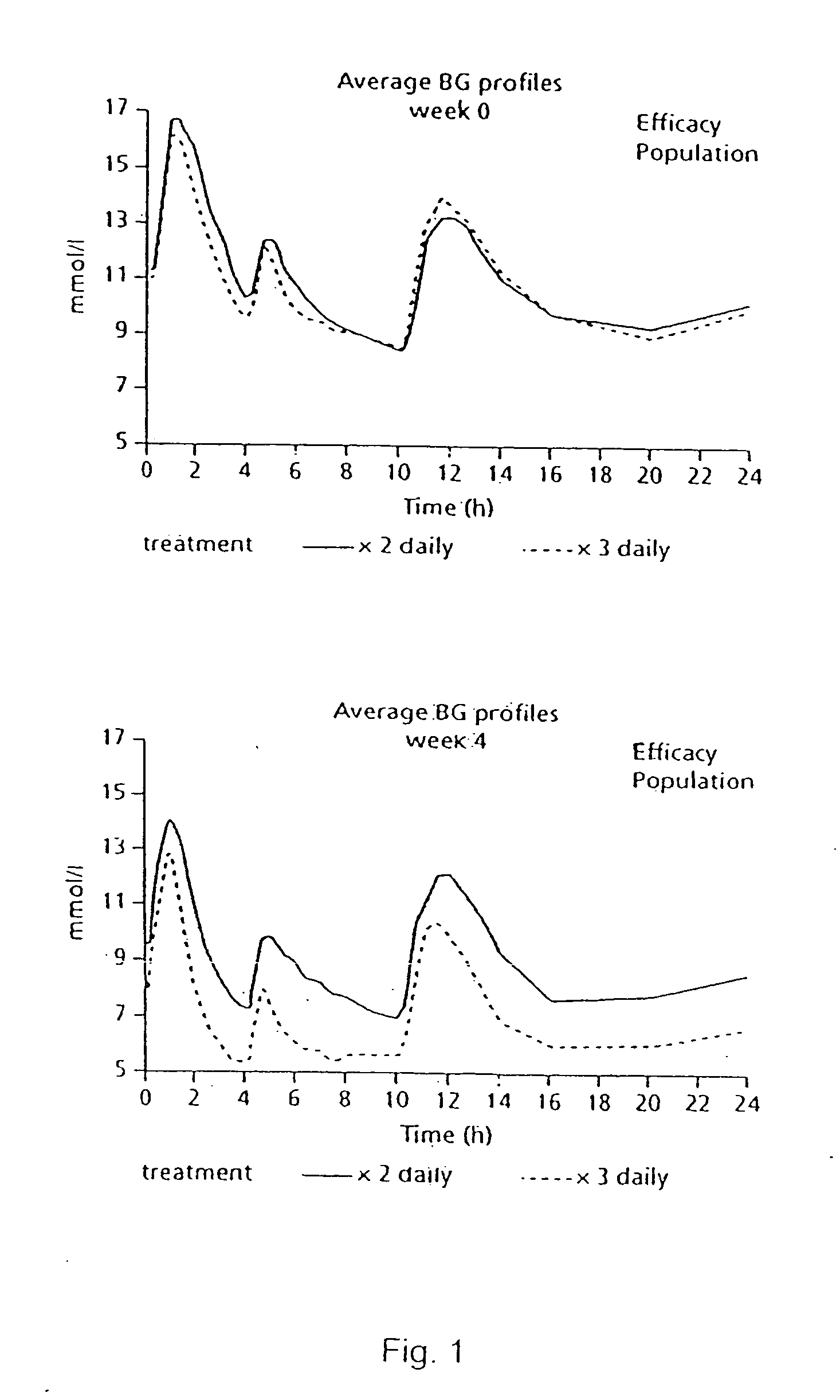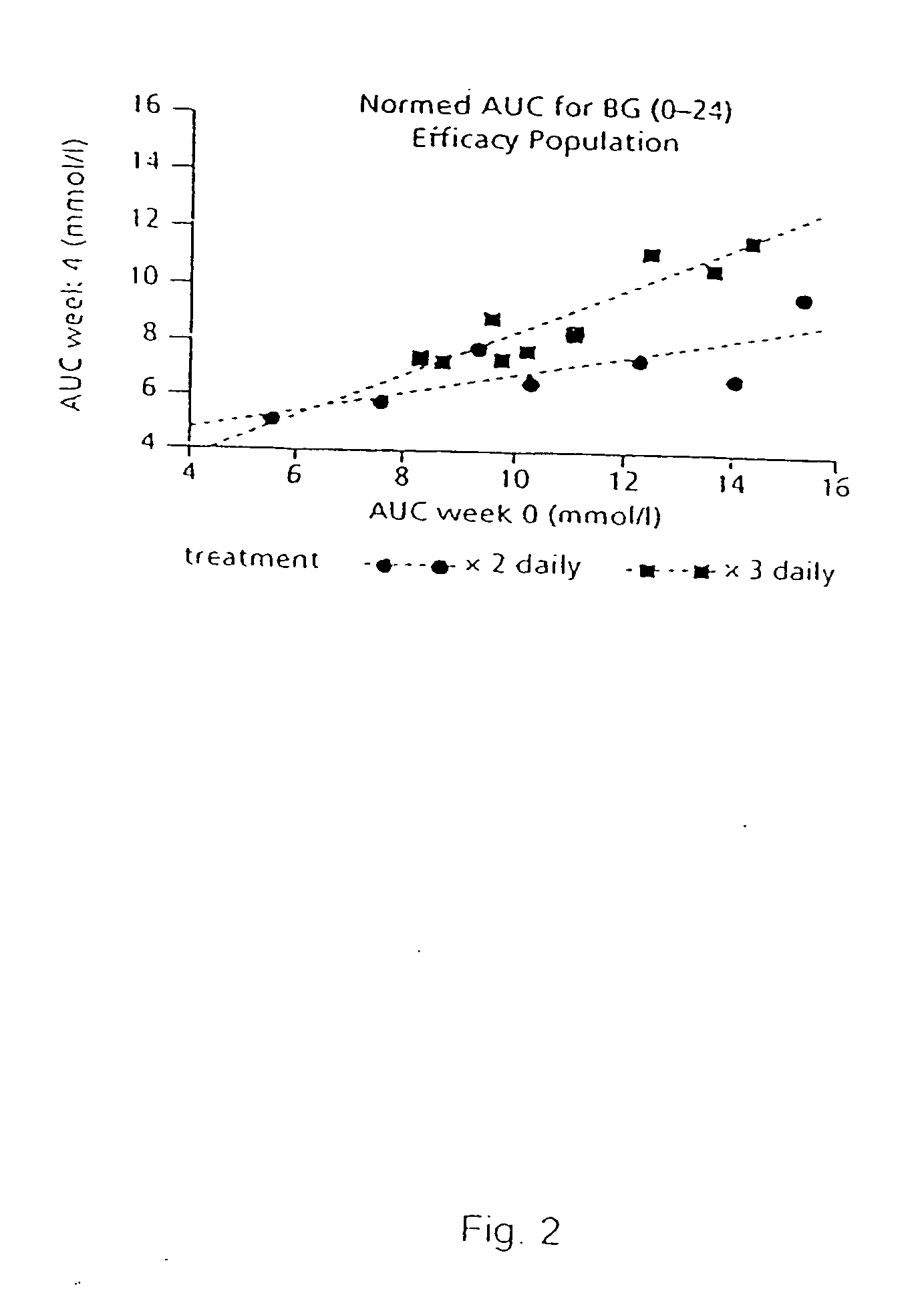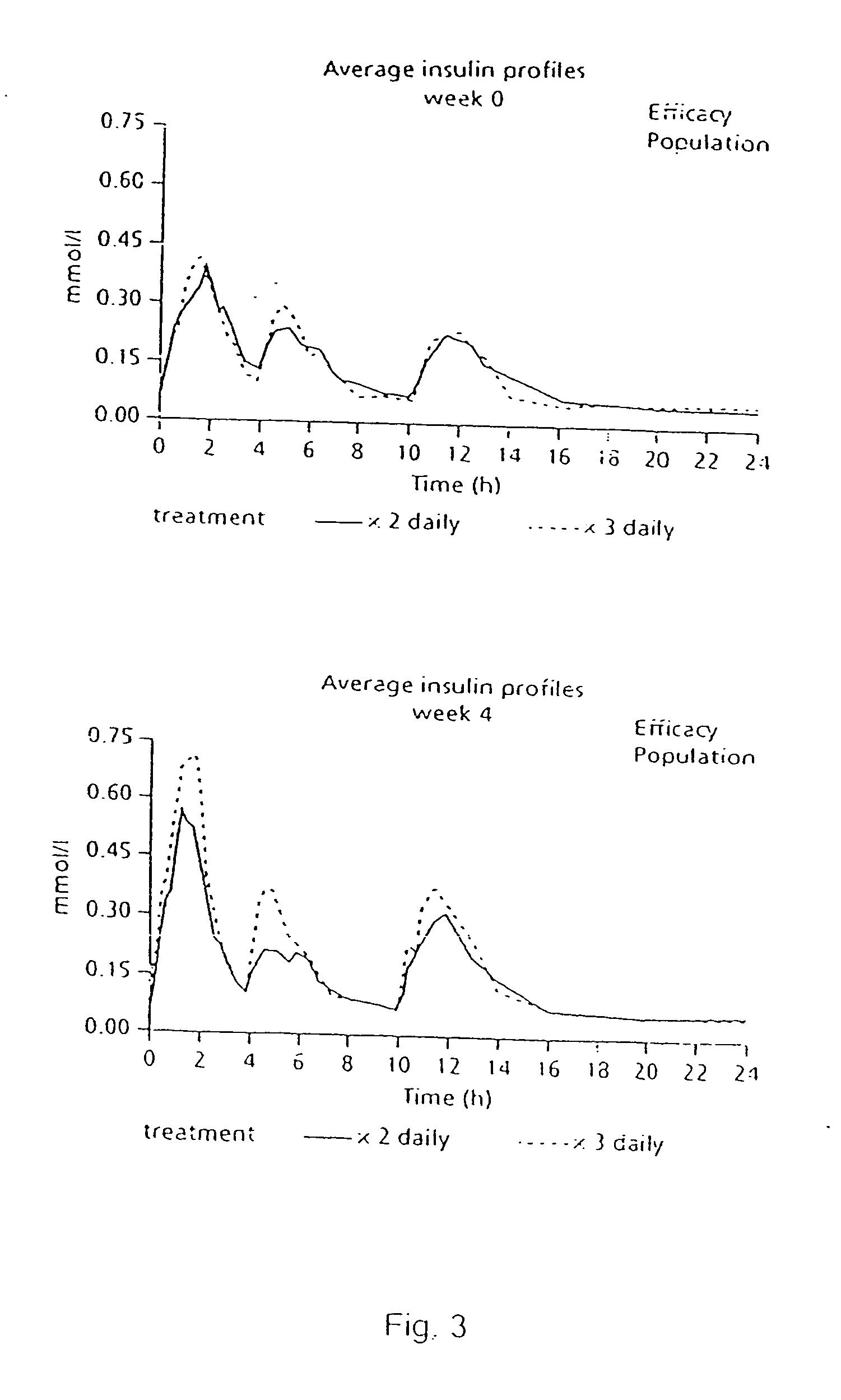Novel NIDDM regimen
a short-acting, hypoglycemic agent technology, applied in the field of short-acting oral hypoglycemic agents, can solve the problems of increasing the risk of diabetic complications, and increasing the difficulty of patients adjusting to treatment, so as to improve the glycaemic control, and improve the effect of glycaemic control
- Summary
- Abstract
- Description
- Claims
- Application Information
AI Technical Summary
Problems solved by technology
Method used
Image
Examples
example 1
[0043] Repaglinide can be Given in a Flexible Dosing Regimen to Patients with Type 2 Diabetes
[0044] As evidenced by the present study, the short duration of action (T1 / 2=one hour) makes repaglinide suitable for a meal-related dosing regimen and provides a more flexible everyday life for people with diabetes.
[0045] In a single-centre, randomised, open-label, parallel group comparison study it was investigated whether repaglinide given preprandially will maintain glycaemic control in patients who skip a meal (lunch) or have an extra meal (bedtime snack) [mixed regimen] as compared with those who have three regular meals [fixed regimen].
[0046] A total of 25 diet-treated patients with type 2 diabetes were enrolled (18 men and 7 women) and given a fixed 1 mg dose of repaglinide preprandially (therapeutic dose range: 0.5-4 mg). After one week of stabilisation patients were randomised to the mixed or fixed regimen for a period of 21 days if blood glucose was >140 mg / dl.
[0047] Mean fruc...
example 2
Improved Glycaemic Control with Repaglinide in NIDDM with 3 Times Daily Meal Related Dosing
Abstract
[0049] Repaglinide belongs to a new chemical class of insulin secretagogues and is a short-acting and rapid acting insulin releaser. The potential impact of tailoring insulin release to meal in-take was investigated in a study comparing 3 times daily dosing with repaglinide just before meals to the same dosage administered twice daily. Eighteen OHA-naive NIDDM patients entered a 4-week, single centre, double-blind study, and were randomised to either 0.25 mg repaglinide before breakfast, lunch and dinner (REP3), or 0.5 mg before breakfast, placebo at lunch, and 0.25 mg before dinner (REP2). After two weeks the doses were doubled. At baseline, blood glucose, insulin, and C-peptide profiles were identical between the two groups. After 4 weeks, fasting blood glucose had decreased significantly in both groups (REP2: 11.2 to 9.6 mmol / l and REP3: 11.2 to 8.4 mmol / l). The overall glycaemic...
example 3
Additional Treatment with Repaglinide Provides Significant Improvement in Glycaemic Control in NIDDM Patients Poorly Controlled on Metformin
Abstract
[0061] This multi centre, randomised trial was designed to compare the effect on glycaemic control of repaglinide (REP) in combination with metformin (MET) against monotherapy with either drug in NIDDM patients inadequately controlled on MET alone (mean HbA1c: 8.5%). Eighty three patients were included in this three-armed, double-blind, double-dummy parallel group study. After a 4-5 week run-in period on their usual dose of MET, patients were randomised to either REP or MET monotherapy, or REP+MET combination therapy. The MET dose was kept constant throughout the study (1-3 g / day). The REP dose was determined during a 4-8 week titration phase (initial REP dose: 0.5 mg three times a day before meals; maximum dose: 4 mg three times a day before meals). A 3-month maintenance period followed the titration phase. From the baseline to final...
PUM
| Property | Measurement | Unit |
|---|---|---|
| body weight | aaaaa | aaaaa |
| Flexible | aaaaa | aaaaa |
| time | aaaaa | aaaaa |
Abstract
Description
Claims
Application Information
 Login to View More
Login to View More - R&D
- Intellectual Property
- Life Sciences
- Materials
- Tech Scout
- Unparalleled Data Quality
- Higher Quality Content
- 60% Fewer Hallucinations
Browse by: Latest US Patents, China's latest patents, Technical Efficacy Thesaurus, Application Domain, Technology Topic, Popular Technical Reports.
© 2025 PatSnap. All rights reserved.Legal|Privacy policy|Modern Slavery Act Transparency Statement|Sitemap|About US| Contact US: help@patsnap.com



